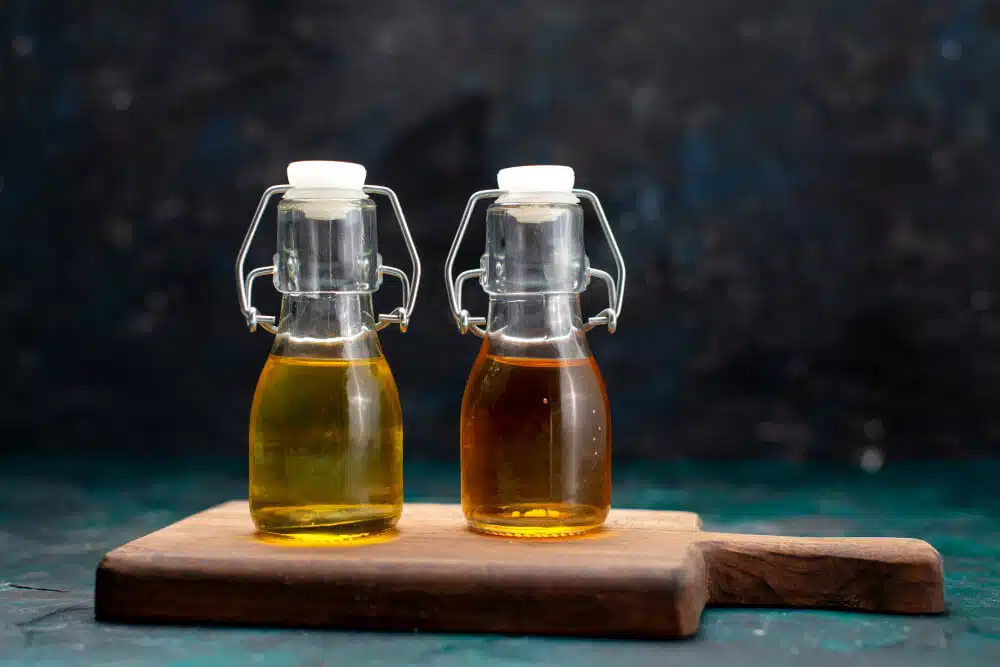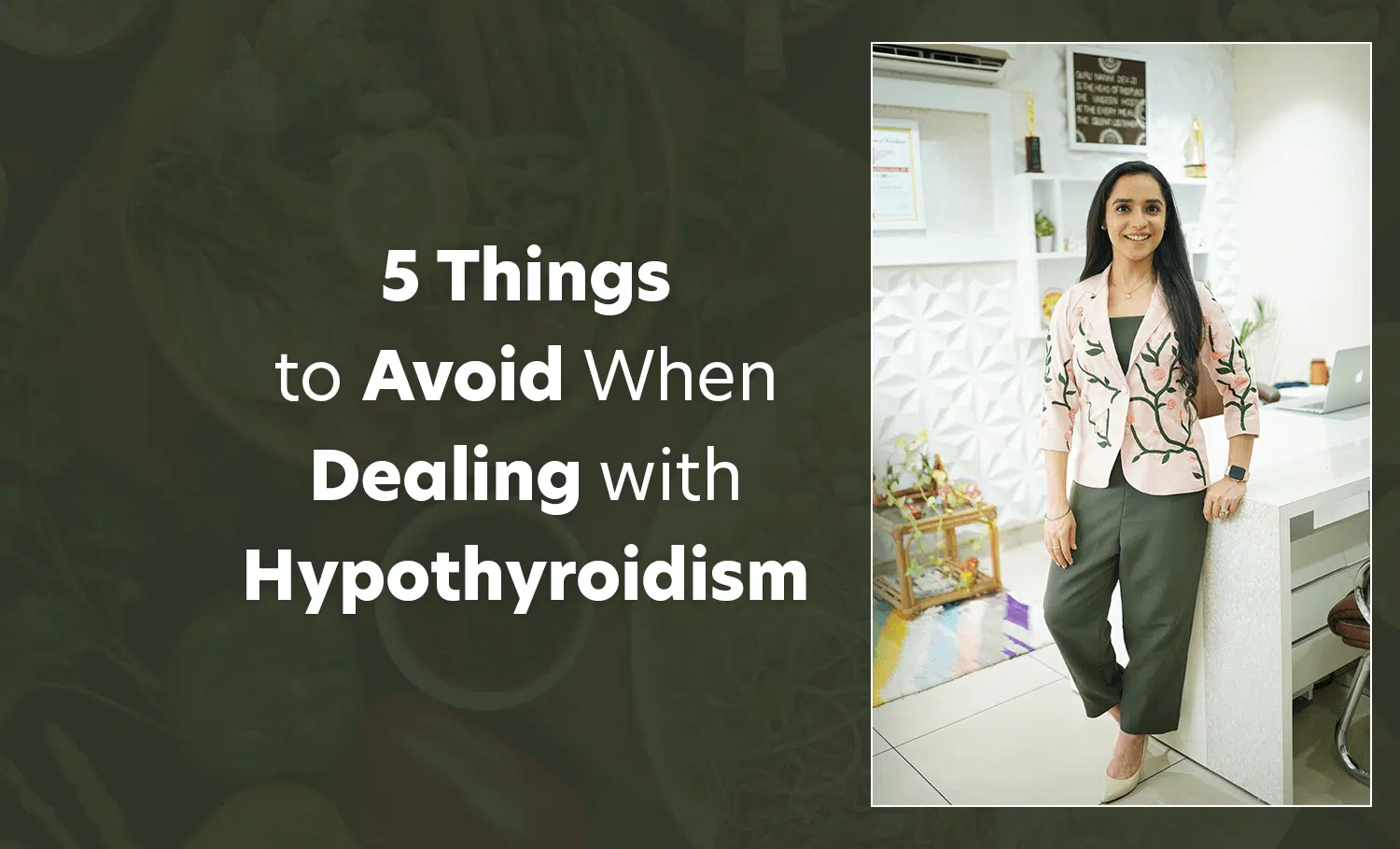Did you know hypothyroidism affects an estimated 300 million people worldwide? Hypothyroidism is a condition where the thyroid gland does not produce enough thyroid hormones. This can lead to a variety of symptoms, including fatigue, weight gain, sensitivity to colds, depression, and dry skin. About 60% of people with hypothyroidism are undiagnosed and the rest are poorly managed. Hypothyroidism is often surrounded by misconceptions. In this blog post, we will clear the misconception and provide you with five essential things to avoid if you have hypothyroidism.
1. Limit Frequent Meals

If you have hypothyroidism you need to be mindful of your meal frequency and consider incorporating a tailored thyroid diet plan. Hypothyroidism slows down your metabolism making digestion of food difficult. For example, in newly diagnosed hypothyroidism cases, taking meals every two hours leads increase in sugar levels. Making it difficult for your body to process the food efficiently. So, taking frequent meals is not advisable. Once your thyroid condition improves and your metabolic rate boosts, you can increase the frequency of your main meals gradually. So, always eat food depending on your body’s requirements. When metabolic rate is slow, we should listen to our body’s meal requirements. It helps to determine whether there is a need for three main meals, two main meals with additional micro-meals, or even one main meal a day. Including fruits and vegetables to meet your micronutrient needs is beneficial. The quantity of food varies depending on individual requirements. Overeating, even if the food is healthy, can negatively impact your metabolic rate. So, avoid frequent frequency of meals.
2. Comprehensive Thyroid Profile Testing

Normally we check T3, T4, and S.TSH levels in a thyroid profile. However, individuals with hypothyroidism should also get their anti-TPO and anti-Tg levels checked. These test measures
- anti-TPO (anti-thyroid peroxidase antibodies) and
- anti-Tg (anti-thyroglobulin antibodies)
This level shows how many antibodies are there attacking your thyroid gland. It also indicates the extent to which your immune system is attacking your thyroid gland.
You must be wondering; Why knowing this level is important?
Knowing this level is important as it helps in determining whether your hypothyroidism is related to an autoimmune disorder or not. About 90% of hypothyroidism cases are Hashimoto’s thyroiditis, an autoimmune condition. The treatment approach for autoimmune cases differs from standard thyroid issues. So, have a comprehensive thyroid profile test. It includes anti-TPO and anti-Tg levels, along with T3, T4, & S.TSH.
3. Be Mindful of Your Diet When Taking Thyroid Medication

The relationship between your diet and thyroid medication absorption is an ongoing research. Some studies suggest in no need to wait before eating after taking your thyroid medication. While other studies suggest waiting for an hour or so. To be on the safer side, it’s advisable not to have a meal immediately after taking medication. Studies have shown that some foods interfere with the absorption of thyroid tablets. Such foods need to be avoided immediately after medication. Consider having foods such as walnuts, caffeine, and sesame seeds after 1 hour of medication. Meal timing also depends on your medication dose. Lower doses allow for early eating. While in higher doses, as recommended by the famous dietitian in India, prefer waiting for about an hour before you eat. Remember, to avoid certain foods like sesame seeds, caffeine, and walnuts immediately after medication in cases of hypothyroidism.
4. Cook Cruciferous Veggies

Cruciferous vegetables, such as cauliflower, kale, cabbage, and broccoli, should be avoided raw. Cooking or sautéing these vegetables before consumption offers several benefits. Raw Cruciferous vegetables help the liver to stay clean and support liver health. Your liver has a direct communication with the hypothalamus. It determines how much thyroid hormone the body needs and the conversion of T4 to T3. When the liver’s f you have hypothyroidism you need to be mindful of your meal frequency. Hypothyroidism slows down your metabolism making digestion of food difficult. For example, in newly diagnosed hypothyroidism cases, taking meals every two hours leads increase in sugar levels. Making it difficult for your body to process the food efficiently. So, taking frequent meals is not advisable. Once your thyroid condition improves and your metabolic rate boosts, you can increase the frequency of your main meals gradually. So, always eat food depending on your body’s requirements. When metabolic rate is slow, we should listen to our body’s meal requirements. functioning is sluggish or inefficient your thyroid gland is affected. This can sometimes lead to elevated cholesterol levels. Sometimes hypothyroidism may cause hypercholesterolemia. It is not due to thyroid levels but due to a sluggish liver and a slow metabolic rate. Thus hypothyroidism disturbs your cholesterol levels as well as in your body. Improving liver health can help normalize your thyroid, leading to better cholesterol levels. For better liver and thyroid health include cooked cruciferous vegetables in your diet at least once a week. Avoid raw cruciferous veggies in your diet.
5. Say No to Refined Oils and Yes to Flaxseed and Peanuts in your diet

Avoid Refined oils in your diet. These oils can clog and block cellular processes, affecting mitochondrial activity. In turn, disturbs proper communication between cells, leading to various health issues. Contrary to a common myth, there’s no need for thyroid patients to avoid flax seeds and peanuts. Flax seeds maintain a balance of omega-3 and omega-6 fatty acids, promoting overall health. And, peanuts are a good source of vitamin B1(thiamine). It helps to prevent dry skin and hair.
Additional Tips for Hypothyroidism Management:
Hypothyroidism is a lifestyle condition that can be controlled and sometimes even can be reversed. Follow these tips to maintain thyroid balance by including the recommended sources in your diet.
- Selenium-rich foods like Brazil nuts
- Green leafy vegetables, nuts, and seeds
- Iodized salt versus rock salt. [ opt for iodized salt and use it in pickles and chutneys to ensure you meet your iodine requirements. To strike the right balance, use both types of salt in your cooking.]
- Include sources rich in vitamins A and B1 in your diet.
These simple dietary adjustments help in supporting your thyroid health and overall well-being.
TO SUM IT UP:
Hypothyroid patients should maintain a Balanced Lifestyle to prevent any complications. Individuals with hypothyroidism should follow specific guidelines to manage their condition. Avoid frequent meals. Do a comprehensive thyroid profile that includes anti-TPO and anti-Tg levels. Don’t eat walnuts, sesame seeds, or caffeine right after taking your thyroid medication. Cook cruciferous vegetables, and say no to refined oils. Remember that hypothyroidism is a condition that can be managed with the right approach and lifestyle choices.
Join Batch 18 of our Wellness Program. Transform your life with our personalized four-month journey. Grab the early bird offer now! This is not your typical group session – it’s a fully personalized program tailored to your unique needs, dedicated to helping you revolutionize your lifestyle. The path to a healthier, happier you begin here.
The Wellness Program is eagerly waiting for you.





Hello Madam, I am suffering from hypothyroidism since 2013, my weight has also increased a lot, what should I do? I am taking tablet 100 mcg